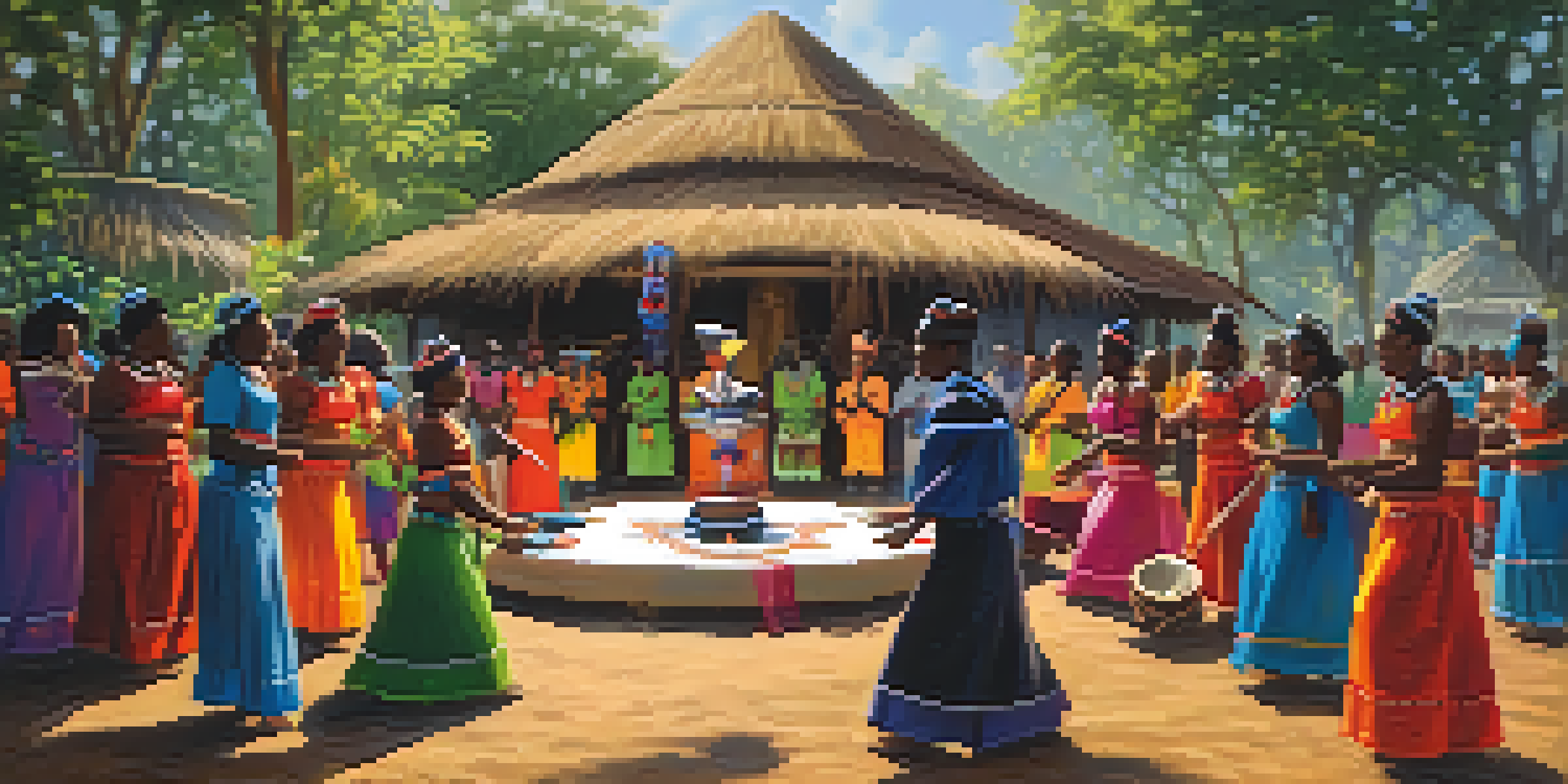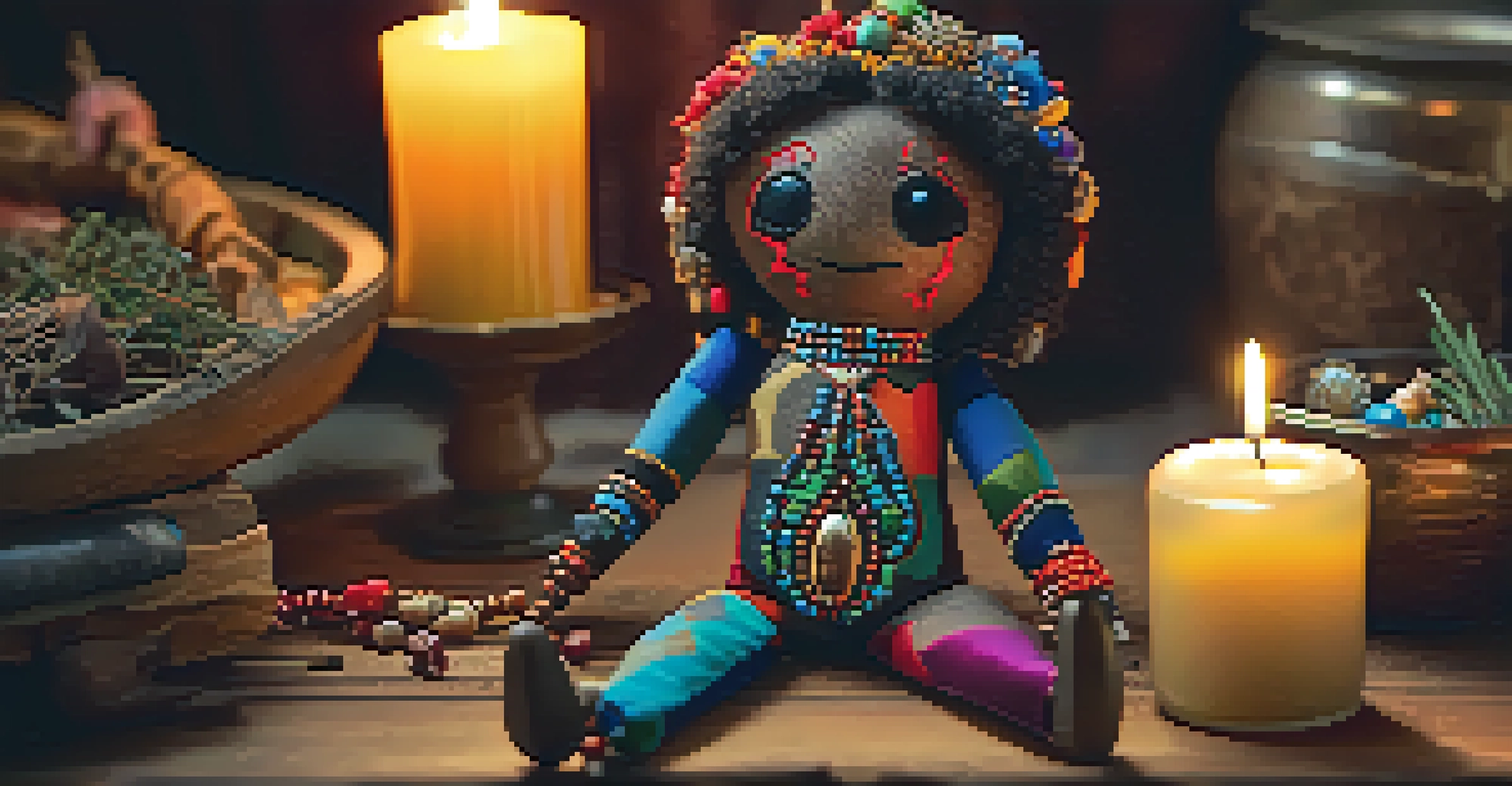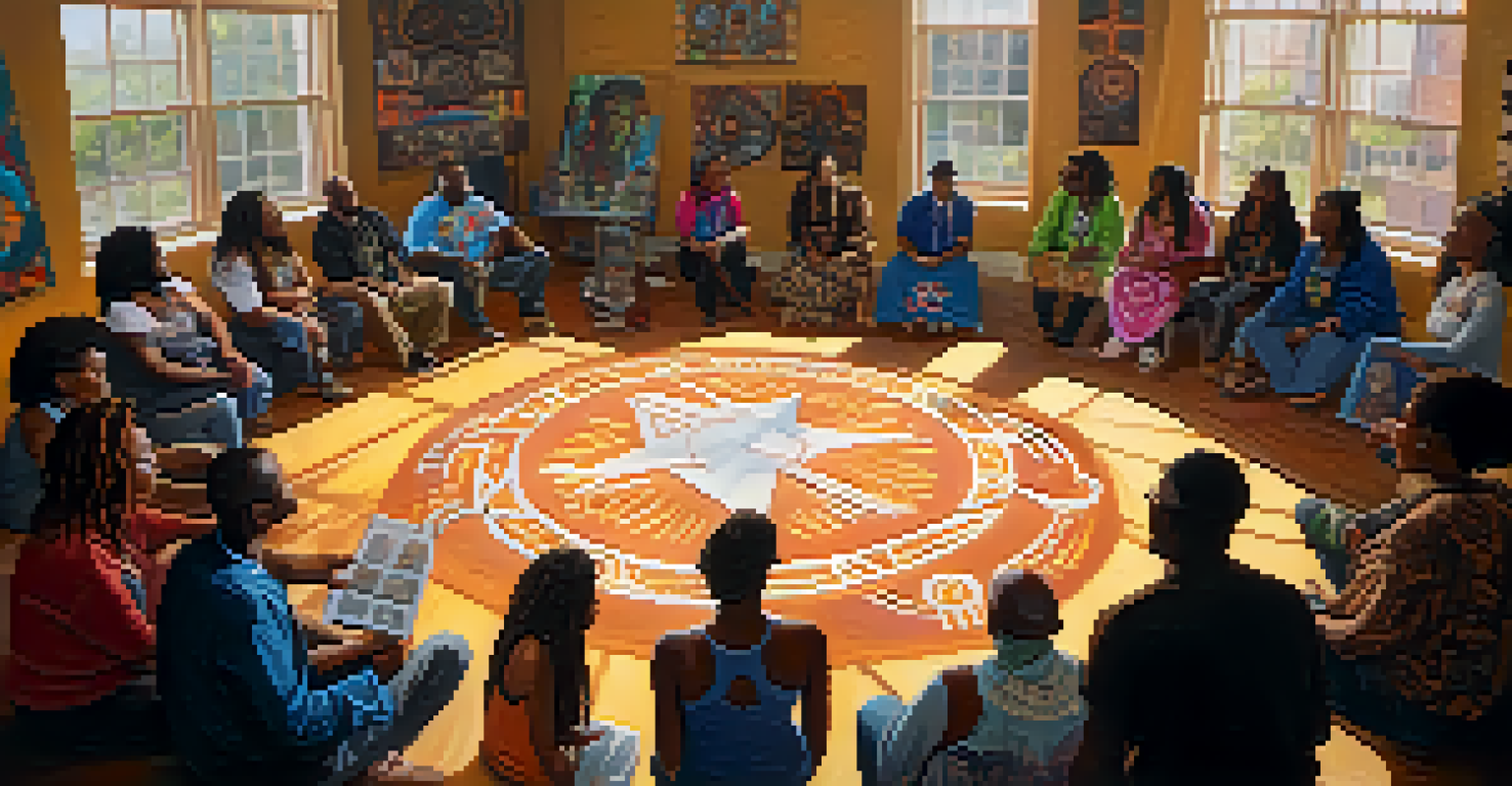Modern Voodoo: Its Evolution and Contemporary Practices

Understanding Voodoo's Historical Roots and Origins
Voodoo, often misunderstood, has deep historical roots that trace back to West Africa. It was brought to the Americas through the transatlantic slave trade, where enslaved people blended their traditional beliefs with elements from Christianity and Indigenous practices. This adaptation created a rich tapestry of spiritual expression that is often misrepresented in popular culture.
Voodoo is a living tradition, constantly evolving and adapting to the needs of its practitioners.
Historically, Voodoo served as a means of resistance, community cohesion, and spiritual guidance. It allowed practitioners to maintain a connection to their ancestors and cultural identity amidst oppression. The faith encompasses a variety of deities, known as Loa, each representing different aspects of life and nature.
As Voodoo spread across regions, especially in Haiti and Louisiana, it evolved and adapted to local cultures. This evolution is crucial in understanding how Modern Voodoo practices emerged and continue to develop today, reflecting the unique experiences of practitioners.
Modern Voodoo: Key Beliefs and Practices
At its core, Modern Voodoo is centered around the belief in a spiritual world that interacts with the physical realm. Practitioners often engage in rituals that invoke the Loa, seeking guidance, healing, or protection. These rituals can include dance, music, prayer, and offerings, creating a deeply immersive spiritual experience.

Unlike the stereotypes often portrayed in media, Modern Voodoo emphasizes community, healing, and personal empowerment. Many practitioners see it as a way to connect with their ancestors and draw strength from their lineage. This focus on ancestry highlights the importance of cultural heritage and the collective memory of the community.
Voodoo's Rich Historical Roots
Voodoo originated in West Africa and was shaped by the experiences of enslaved people, blending traditional beliefs with elements of Christianity and Indigenous practices.
Moreover, Modern Voodoo practices can vary widely among practitioners, influenced by personal beliefs and regional customs. Some may incorporate elements from other spiritual traditions, while others strictly adhere to traditional practices, showcasing the vibrant diversity within Voodoo today.
The Role of Rituals in Contemporary Voodoo
Rituals are the heartbeat of Modern Voodoo, serving as a bridge between the spiritual and physical worlds. They allow practitioners to express their beliefs, celebrate life events, and seek guidance from the Loa. Whether it's a ceremony for healing, protection, or celebration, rituals can be highly personal and tailored to individual needs.
The essence of Voodoo is the connection to one's ancestors and the power they provide in our daily lives.
In contemporary settings, rituals are often communal events, fostering a sense of belonging and support among participants. They may take place in homes, community centers, or temples, encouraging inclusivity and connection. This communal aspect is vital, as it reinforces the idea that Voodoo is not just a personal practice but a shared cultural experience.
Additionally, modern technology has influenced how rituals are conducted. Many practitioners now share their rituals and experiences online, creating virtual communities that transcend geographical boundaries. This evolution showcases how Modern Voodoo continues to adapt and thrive in a rapidly changing world.
The Influence of Pop Culture on Voodoo Perceptions
Pop culture has had a significant impact on the perception of Voodoo, often leading to misconceptions and stereotypes. Movies, books, and television shows frequently depict Voodoo as dark, mysterious, and malevolent, overshadowing its true essence and cultural significance. These portrayals can perpetuate fear and misunderstanding among the general public.
Despite these challenges, many practitioners actively work to educate others about the realities of Voodoo. They aim to demystify the faith and highlight its core values of love, healing, and community. By sharing their personal experiences and insights, they hope to foster a more accurate understanding of Voodoo in contemporary society.
Modern Voodoo Emphasizes Community
Contemporary Voodoo practices focus on community, healing, and personal empowerment, allowing practitioners to connect deeply with their heritage and ancestors.
As more people are drawn to alternative spiritual practices, there is a growing interest in authentic Voodoo. This trend has led to a resurgence of interest in its rich traditions, prompting practitioners to reclaim and celebrate their heritage. In doing so, they contribute to a more nuanced and respectful appreciation of Voodoo in modern culture.
Voodoo in Urban Settings: Adaptations and Innovations
Modern Voodoo has found a vibrant expression in urban settings, where it adapts to the fast-paced lifestyle of city dwellers. Urban practitioners often blend traditional practices with contemporary influences, creating unique rituals and community events. This adaptability ensures that Voodoo remains relevant and accessible to a new generation of followers.
In cities, Voodoo gatherings may take the form of workshops, festivals, or community service events, emphasizing social justice and cultural pride. These gatherings foster connections among practitioners and promote an understanding of Voodoo's values beyond mere spirituality. They create spaces for dialogue and education, allowing participants to learn about their heritage.
Furthermore, urban practitioners often utilize technology to spread awareness and foster community. Social media platforms enable them to share their practices, connect with others, and showcase the vibrant culture surrounding Modern Voodoo. This digital presence is crucial for maintaining a sense of community, especially for those who may feel isolated in urban environments.
Voodoo and Mental Health: Healing Practices Today
Modern Voodoo has increasingly been recognized for its holistic approach to mental health and well-being. Many practitioners incorporate spiritual healing practices as a way to address emotional and psychological challenges. This can include rituals, meditative practices, and consultations with spiritual leaders, all aimed at fostering inner peace and resilience.
The emphasis on community support in Voodoo also plays a significant role in mental health. Practitioners often gather to share their experiences and provide emotional support, creating a strong network of care and understanding. This sense of belonging can be particularly healing for individuals facing personal struggles.
Rituals Foster Connection and Growth
Rituals in Modern Voodoo serve as vital expressions of faith, promoting a sense of belonging and adapting to urban settings while embracing technology.
Additionally, some mental health professionals are exploring the integration of cultural and spiritual practices into traditional therapy. By acknowledging the value of Voodoo in promoting mental health, they aim to create more inclusive and effective treatment options for diverse populations. This collaboration highlights the importance of respecting and valuing cultural practices in the healing process.
The Future of Modern Voodoo: Trends and Outlook
As Modern Voodoo continues to evolve, several trends are shaping its future. The growing interest in spirituality and alternative practices has led to an increase in followers, prompting a renaissance of traditional rituals and teachings. This resurgence offers opportunities for practitioners to share their knowledge and deepen their connections to their heritage.
Moreover, the intersection of Voodoo with social justice movements highlights its relevance in contemporary society. Many practitioners are using their spiritual practices to advocate for change and address issues such as inequality and environmental justice. This commitment to activism reflects Voodoo's core values of community and empowerment.

Looking ahead, the future of Modern Voodoo appears promising, with opportunities for continued growth and adaptation. As more people seek authentic spiritual experiences, Voodoo's rich history and practices may inspire a wider audience, fostering greater understanding and appreciation for this unique tradition.